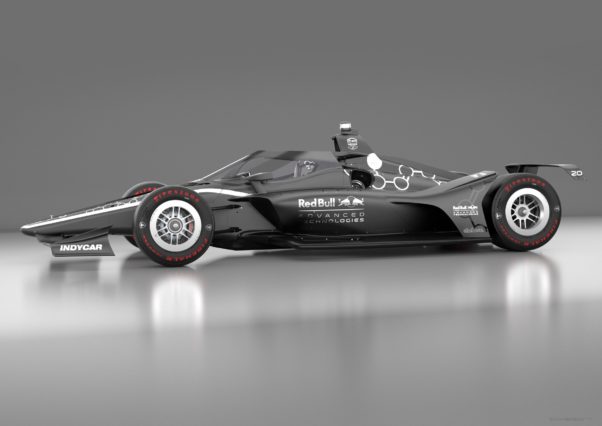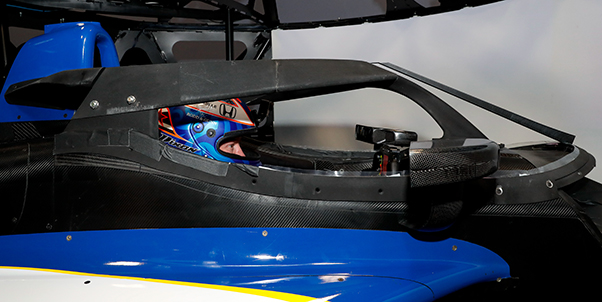IndyCar Will Conduct Another Test Of Latest ‘Aeroscreen’; Cupholders Not Included
IndyCar will execute it’s first on-track test for the INDYCAR Aeroscreen driver safety innovation in preparation for the 2020 NTT IndyCar Series season. Five-time NTT IndyCar Series champion Scott Dixon of Chip Ganassi Racing, 2014 series champion Will Power of Team Penske will be drafted drive the entirely new enclosed cockpit variant on Wednesday, Oct. 2 at IMS
INDYCAR announced in May that the sanctioning body formed a partnership with Red Bull Advanced Technologies to design an Aeroscreen for enhanced driver cockpit protection that will be implemented for the 2020 NTT IndyCar Series season. The Aeroscreen is being developed to reduce the risk of driver injury from debris or other objects striking the cockpit area. The driver safety innovation that will surround the cockpit consists of a ballistic Aeroscreen anchored by titanium framework.

According to IndyCar the RBAT design will be a poly carbonate laminated screen that will include an anti-reflective coating on the interior of the screen, anti-fogging device through an integral heating element and possibly tear-offs, all of which will be produced by integrated third-party companies. Another feature for the drivers will be a cockpit cooling option that will be designed by Dallara in conjunction with RBAT. In other words it’ll be an expensive solution in search of a problem – going forward all italics represent Editor opinions by the way).
The titanium framework will mount in three areas around the cockpit – the chassis center line, two rear side mounts and roll hoop integration – to provide enhanced load-bearing capabilities (also expensive). This will be the first of three on-track tests. Additional tests are scheduled for Barber Motorsports Park on Monday, Oct. 7 and at Richmond Raceway on Tuesday, Oct. 15.
The Aeroscreen is the second phase of INDYCAR’s objective to further enhance driver safety in the open-cockpit race cars. INDYCAR debuted the Advanced Frontal Protection (AFP) device (also known as a ‘wire-cutter’) for the INDYCAR Grand Prix held May 10-11 at the Indianapolis Motor Speedway road course and used throughout the season. (Note; there were no incidents of wires laying across the track during the entire 2019 season, although the little dongle was handy for holding things up like hats, cooling fans, smartphones and laptops while the car was in the pits).

The AFP is designed to help deflect debris away from the cockpit area and the driver. (Also of note; near as we can tell, there has never been an IndyCar injury incident involving debris entering the cockpit or hitting a driver in the head/shoulder area, particularly once head/shoulder bolsters were designed into today’s Dallara design. However, the series did *need* to keep up with F1 in terms of trying to turn a bull into a cow for ‘safety’s sake’, while also ensuring that the production cost curve relating to car development would continue to go up year-over-year.
Also, as announced IndyCar is planning the addition of a cooling system (aka Air Conditioning) in conjunction with the new system, thereby leading to the potential of WiFi, AM/FM/CD/MP3-Port, 12″ touchscreen controls, two handy cupholders, a 12 camera invisible trailer capability to ensure that Sato doesn’t end up in anyone’s blind spot ever again, driver airbags, automated back massage, compact spare tire, and a comprehensive 3-year 50,000 mile powertrain warranty).
Seriously tho, while we appreciate the effort, why try to fix something that isn’t in evidence? May as well move over to the IMSA side, put a roof on it, call the new variant a ‘sportscar’ and leave it at that.
